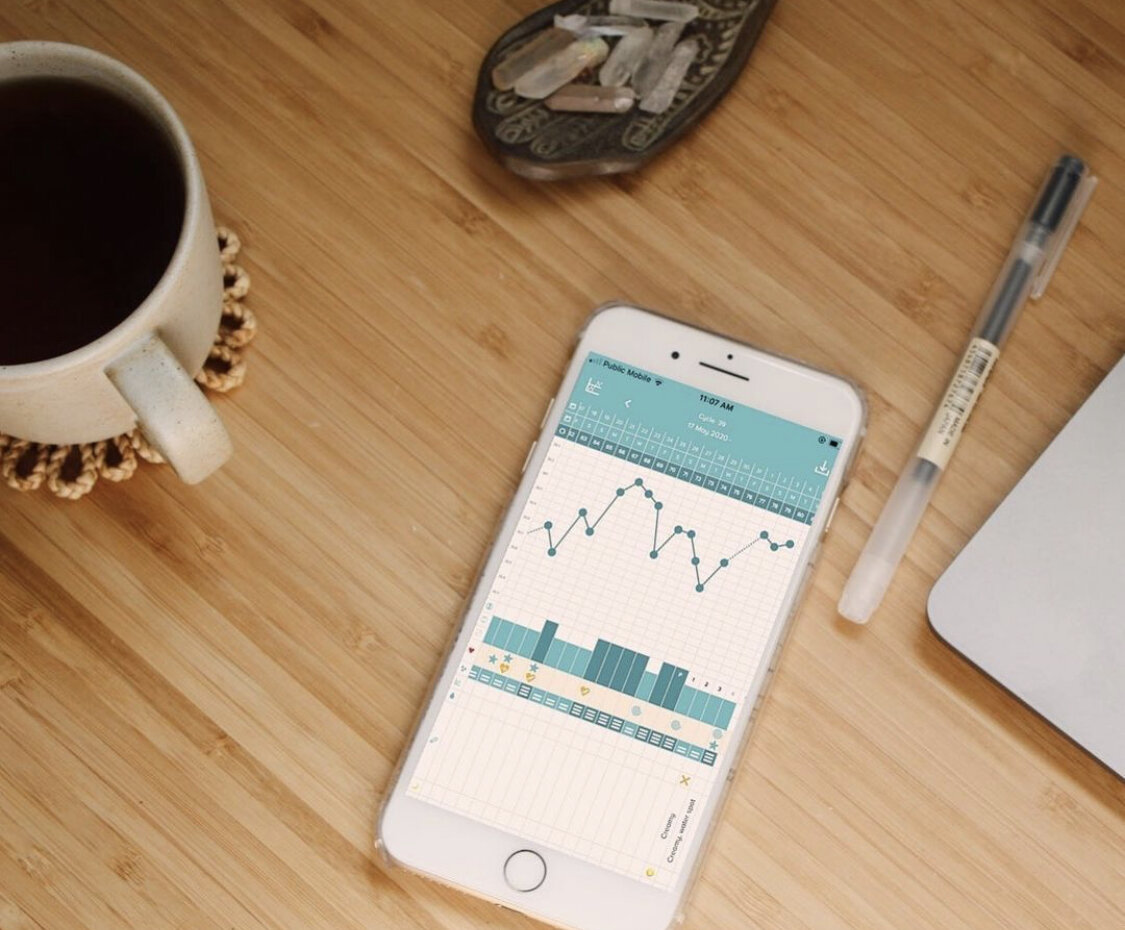How to know when you Ovulate
A reminder that it's 100% okay if your fertile signs don't line up! We're humans, not robots. What we're doing when we are charting with FAM is less about finding the exact moment of ovulation and more about narrowing in on the approximate time of ovulation, so that we can be sure there is no egg present to fertilize (if trying to avoid).
A good way to think about your fertile signs in relation to ovulation is whether they are prospective (this is to say, with a potentially prospective sign, we can never be 100% sure of ovulation before it actually happens) or retrospective signs of ovulation.
Ovulation is a one-time event that takes only about 15 minutes. Once the egg is released, it will live for approximately 12-24 hours. With fertility awareness, we are getting a snapshot of fertility. We can't know the exact moment of ovulation, but we can use fertility signs to narrow in on when ovulation occurred.
Here are a few signs of ovulation, basal body temperature and cervical mucus are in bold because they are primary indicators of ovulation.
A positive LH test indicates that ovulation may happen in the next 24-36 hours. LH tests for ovulation are not definitive markers because you can ovulate without a positive test, and you can have a positive LH test and not ovulate. Using LH test strips with cervical mucus is more effective than using them on their own.
Cervical mucus is a hydrogel secreted by the cervix. Cervical mucus and ovulation have a direct relationship. After your period, cervical mucus may be dry, dry-ish, creamy or sticky. As estrogen rises, cervical mucus before ovulation becomes increasingly more sperm-friendly. Cervical mucus tells us that ovulation is approaching (prospective) due to the cervix responding to rising estrogen, but it also helps us confirm ovulation (retrospective) due to the progesterone dry-up after peak. Ovulation happens on peak day or within a few days either side of peak day. Cervical mucus before your period may return to a dry, dry-ish, creamy or sticky consistency and sensation. A few days before your period you may notice an increase in cervical mucus. It’s a myth that your cervical mucus will be completely dry before your period.
A rise in basal body temperature on your chart is a sign ovulation has already occurred, due to the warming effect of progesterone on the body. Basal body temperature is your lowest body temperature attained during rest. During ovulation, progesterone is released by the corpus luteum which causes a rise in basal body temperature. Basal body temperature is a retrospective marker of ovulation.
Urine PdG (Proov) tests are retrospective markers of ovulation - or signs ovulation has already occurred. Proov tests let you know that ovulation has happened after the fact and can back up your other primary markers if you are unsure or missed some data.
While we can’t know the exact moment of ovulation without an ultrasound, there are different evidence-backed markers that we track to narrow down the approximate time of ovulation and be sure that it’s happened.
These rules are not used in isolation, rather, they’re used together as ‘insurance policies’ so that we’re certain ovulation has occurred.
Taking one biomarker in isolation (except for CM only methods which use strict rules) and using that to determine ovulation isn’t accurate. The only way we can confirm ovulation is to take the primary indicators of our method into account and to put them in context of our method’s rules (swipe).
I hear a lot of folks say that they think they’ve ovulated because they ‘usually ovulate on day 16’ ‘saw a bit of watery CM’ ‘had a positive LH test’ ‘felt ovulation pain.’ Noticing one sign in isolation, (or in the case of ovulation pain, not a certain indicator of ovulation) is not the same as learning a method comprehensively and confirming ovulation with the rules.
✖️ A positive LH test does not guaranteed you ovulated
✖️ A bit of ‘wet mucus’ does not guarantee you ovulated
✖️ A twinge in your ovary does not guarantee you ovulated
That is because there are specific rules that are backed by the science, that have been shown to pair with each other (or be used in specific ways on their own, like in the case of CM only methods), to show ovulation has happened.
Sure, we can supplement our fertility charting with other markers, but we need to rely on the primary markers of our method in order to know for sure we’ve ovulated.

